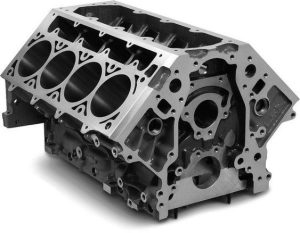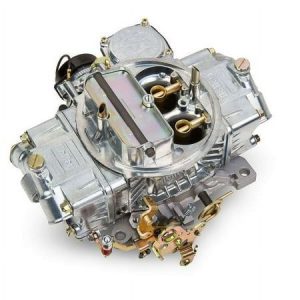For centuries, science fiction has captivated us with the idea of warp drives, allowing spaceships to travel faster than light. While such technology might seem like the realm of fantasy, some innovative proposals attempt to push the boundaries of conventional spacecraft propulsion. One such concept is the helical engine, a theoretical design that aims to achieve near-light-speed travel without the need for propellant.
This article delves into the intriguing world of the helical engine. We’ll explore the concept’s origins, its proposed method of operation, the scientific challenges it presents, and its potential impact on future space exploration. Buckle up, as we embark on a journey into the theoretical realm of propulsion that could revolutionize interstellar travel.
Beyond Rockets: The Need for a New Paradigm in Space Travel
Current space travel methods rely on rockets that expel propellant to generate thrust. This approach has limitations. The propellant adds significant weight, limiting payload capacity. Additionally, the achievable speeds are restricted by the rocket equation, making interstellar travel a time-consuming endeavor.

The helical engine proposes a radical departure from conventional methods. Instead of expelling propellant, it aims to manipulate the surrounding spacetime to propel the spacecraft. This concept falls under the category of “reactionless drives,” theoretical engines that wouldn’t require propellant to generate thrust.
Theory in Action: How the Helical Engine Might Work
The proposed operation of the helical engine involves accelerating charged particles (ions) within a closed loop. Here’s a simplified breakdown:
- Ion Acceleration: The engine uses an electric field to accelerate ions to near-light speed within a toroidal (doughnut-shaped) chamber.
- Momentum Manipulation: By subtly changing the direction of the ions at specific points in the loop, the engine alters their overall momentum.
- Spacetime “Drag”: Theorists propose that this manipulation of the ions’ momentum creates a “drag” effect on the surrounding spacetime, propelling the spacecraft forward.
Important to Note: The theory behind the helical engine is complex and still under development. There’s no scientific consensus on whether it can achieve sustained thrust or overcome the limitations of current propulsion systems.
Warp Drive Aspirations vs. Scientific Hurdles: Can the Helical Engine Live Up to the Hype?
The potential benefits of the helical engine are undeniably exciting. Imagine spacecraft reaching distant star systems within a human lifetime! However, there are significant scientific hurdles to overcome:
- Energy Requirements: The proposed design might require immense amounts of energy to accelerate the ions to near-light speeds. Current technology might not be able to provide sufficient power for practical applications.
- Spacetime Manipulation: The concept of manipulating spacetime to create thrust remains highly theoretical. There’s no definitive proof that the engine can create the theorized “drag” effect.
- Engineering Challenges: Building a functional helical engine would require overcoming significant engineering challenges. Miniaturization of powerful particle accelerators and the creation of a high-efficiency closed-loop system are just a few hurdles.
Helical Engine: A Stepping Stone or a Dead End? The Future of Reactionless Drives
Despite the challenges, the helical engine has sparked discussions about alternative propulsion methods. Here’s how it might contribute to the future of space travel:

- Inspiration for New Ideas: The helical engine, even if not feasible in its current form, could inspire further research into reactionless drives and alternative methods of spacecraft propulsion.
- Theoretical Stepping Stone: Understanding the theoretical underpinnings of the helical engine could contribute to the development of more practical reactionless drive concepts in the future.
- Highlighting Challenges: By exploring the limitations of the helical engine, scientists gain valuable insights into the fundamental challenges of manipulating spacetime for propulsion.
Beyond the Horizon: The Search for Propulsion Solutions for Interstellar Travel
The helical engine might not be the answer to achieving warp-speed travel just yet. However, its exploration pushes the boundaries of our understanding of physics and propulsion. As we continue to explore the cosmos, the search for efficient and sustainable methods of interstellar travel remains a crucial endeavor.
The development of alternative propulsion technologies has the potential to revolutionize space exploration, opening up new possibilities for scientific discovery and human expansion into the vast universe.
Embrace the Unknown: Dive Deeper into the World of Helical Engine Research
Intrigued by the theoretical world of the helical engine and its potential impact on space travel? Here are some resources to delve deeper:

- Research Papers: The original proposal for the helical engine can be found in a NASA technical report by David M. Burns titled “Helical Engine: A New Concept for In-Space Propulsion.”
- Online Resources: Websites like the National Institute of Aerospace (NIA) and the American Institute of Aeronautics and Astronautics (AIAA) offer resources and articles about advanced propulsion concepts, including discussions on reactionless drives.
- Citizen Science Projects: Some space exploration organizations and universities might have citizen science projects related to propulsion research. These projects allow the public to contribute to scientific discovery.
Helical Engine: A Call to Action for Innovation
The concept of the helical engine serves as a reminder that the boundaries of space exploration are constantly being pushed. While challenges remain, the potential rewards are immense. Here’s a call to action for continued innovation:
- Support Breakthrough Technologies: Investing in research and development of groundbreaking propulsion technologies like the helical engine is crucial for achieving interstellar travel in the future.
- Think Outside the Box: Embracing unconventional ideas and fostering a culture of innovation are essential for achieving breakthroughs in space propulsion.
- Imagine the Possibilities: Let the concept of the helical engine inspire you to dream big about the future of space travel.
The human spirit of exploration has always driven us to venture beyond the known. The helical engine might be a glimpse into a future where humanity can explore the cosmos with unprecedented speed and efficiency.
Don’t Just Dream It, Explore It: Become a Part of the Future of Space Travel
The quest for faster, more efficient space travel is an ongoing endeavor. While the helical engine might not be the ultimate solution, it’s a stepping stone on the path towards interstellar exploration. Get involved, stay curious, and imagine the possibilities! Together, we can push the boundaries of what’s possible and unlock the secrets of the universe.

Take the first step towards becoming a part of the future of space exploration. Reach out to your local space organizations, educational institutions, or research centers to see how you can contribute. Let’s make interstellar travel a reality, not just science fiction!
Beyond the Helical Engine: Exploring Alternative Propulsion Concepts for Interstellar Travel
The helical engine might have captured our imagination, but it’s just one concept among many in the realm of alternative propulsion for interstellar travel. Here’s a glimpse into some other promising ideas that scientists and engineers are exploring:
-
Nuclear Thermal Rockets: These rockets use nuclear fission to heat propellant to extremely high temperatures, resulting in significantly higher thrust compared to traditional chemical rockets. While offering greater efficiency, nuclear thermal rockets still require propellant, but the amount needed would be considerably less compared to current methods.
-
Fusion Drives: Nuclear fusion, the process that powers stars, holds immense potential for space travel. Fusion drives could offer near-limitless energy for spacecraft propulsion. However, achieving sustained nuclear fusion remains a scientific hurdle that needs to be overcome before fusion drives become a reality.
-
Warp Drive Concepts: The concept of warp drives, popularized in science fiction, involves manipulating spacetime to propel a spacecraft, allowing for faster-than-light travel. While the theoretical underpinnings are complex and still debated, some scientists are exploring theoretical warp drive designs like the Alcubierre drive, which utilize hypothetical concepts like negative energy.
-
Lightsail Propulsion: This method utilizes the pressure exerted by light particles (photons) to propel a spacecraft. While currently limited in thrust, advancements in laser technology and the development of large, lightweight sails could make lightsails a viable option for future interstellar missions.
The Road Ahead: Challenges and Opportunities in Interstellar Travel Propulsion
The journey towards achieving interstellar travel with efficient and practical propulsion methods is fraught with challenges. Here are some key areas that require further exploration:

-
Energy Source: Most advanced propulsion concepts, like fusion drives and some warp drive theories, require immense amounts of energy. Developing compact and powerful energy sources is crucial for powering these future spacecraft.
-
Material Science: Building spacecraft capable of withstanding the extreme environments encountered during interstellar travel necessitates advancements in material science. Developing materials that can handle the high temperatures, radiation, and micrometeoroid impacts encountered in deep space is essential.
-
Propulsion System Efficiency: Optimizing the efficiency of propulsion systems is vital for interstellar travel. Minimizing propellant usage and maximizing thrust output will be crucial for interstellar missions that may take decades or even centuries.
A Universe of Discovery Awaits: The Enduring Allure of Interstellar Travel
The challenges associated with interstellar travel are significant, but the potential rewards are immeasurable. Imagine humanity venturing beyond our solar system, exploring distant star systems, and unraveling the mysteries of the cosmos.
The pursuit of interstellar travel is not just about technological advancement; it’s about expanding our understanding of the universe and our place within it. The concepts explored in this article, including the helical engine and other alternative propulsion methods, represent the ingenuity and ambition that drive us to explore the unknown.
Embracing the Journey of Discovery
The journey towards interstellar travel is a marathon, not a sprint. It will require continued research, collaboration, and a commitment to pushing the boundaries of scientific exploration. The concepts explored in this article offer a glimpse into the exciting possibilities that lie ahead.
While the helical engine might not be the ultimate answer, it serves as a reminder of the human spirit of exploration and our unwavering desire to reach for the stars. As we continue to innovate and explore, the dream of interstellar travel might just become a reality.
